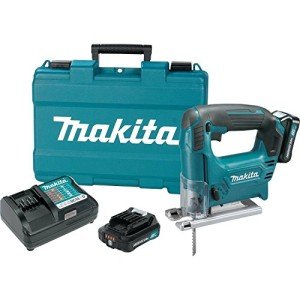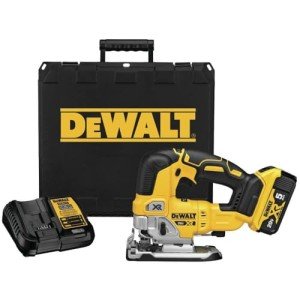The 10 Scariest Things About Shop Power Tools
페이지 정보

본문
 The Workhorse of the Shop Power Tools
The Workhorse of the Shop Power Tools Power tools are hand-held and powered by internal combustion, electricity, or compressed air. They can be used for Uk Powertools cutting, drilling and sanding materials.
Power tools are hand-held and powered by internal combustion, electricity, or compressed air. They can be used for Uk Powertools cutting, drilling and sanding materials.One of the most important power tools every woodworker should own is a table saw which can take care of almost any cutting job. Also consider a miter-saw stand as well as a drill/driver kit.
Table Saw
A table saw is the workhorse of shop power tools and may be the most versatile woodworking tool. It is able to cut, cross-cut, miter cut, and even dado and rabbet stock. It can also cut angled surfaces to create frames or chests, as well as planters.
The saw has a large circular blade that spins at high speed. It has tables of a decent size (infeed and outfeed) that support the stock as it passes through the blade. Blade guards protect the blade, stopping wood from being caught and possibly being thrown back to the operator. The saw is further protected by a riving knife or splitter which is a vertical projection that is located directly behind the blade that can be in the form of a pin or fin.
Contractor-style tablesaws are equipped with a bigger motor, which is hinged off the rear and drives the blade by using two or three rubber V-belts. These saws are used primarily by carpenters but can also be found in the home shop. They have more features, such as a sliding mitertable, than portable ones.
Smaller table saws have smaller motors, lighter in weight that is usually belt driven. These saws are not as powerful and are geared more toward enthusiasts and home use. Many of them come with a sliding mitertable, which allows users best place to buy tools online make intricate cuts, such as those required for picture and mirror frames, or boxes or drawers.
It is crucial to operate a tablesaw properly to avoid injuries. Always remain to the left of the blade when making cuts that rip and keep your hands clear of the saw's edge. It is essential to use an extension stick or a guide block when cutting, particularly in business settings where HSE standards require you to keep at least one hand's distance from the blade.
Many woodworking projects call for tapered legs, and the easiest and most efficient method of cutting them is using a tablesaw and a simple, adjustable tapering jig you can make at home. A tapering jig can be adjusted to any angle that is between zero and fifteen degrees. This allows you to cut any set of tapered legs in your workshop.
Bandsaw
A bandsaw is perfect for cutting different shapes out of wood and metal making it an essential tool for custom fabrication. It's also a useful tool for woodworking projects, like furniture and cabinetry. The saw is able to make curved cuts, including circles, and can cut through many types of materials including ice.
There are two types of bandsaws: vertical and horizontal. Vertical bandsaws are typically used for freehand cutting and excel at resawing and cutting curved cuts, whereas horizontal bandsaws excel at making straight and angled cuts. The saw can operate manually or through an electric feed system. Manual bandsaws require the user to manually lower and raise the blade to cut, whereas power fed systems are more efficient.
When using bandsaws, it is important to prioritize safety. Always wear safety gear, such as safety glasses and ear protection to protect against sawdust and noise. To avoid injuries and accidents, keep your feet and hands out of the blade. It is also important to set up the saw correctly to ensure safety. Make sure the blade and guides are properly aligned and that the blade is secured.
Depending deals on power tools the type of material you're cutting, you may need to adjust the feed rate and speed to get the optimal results. Regular maintenance and adjustments to the tension of the blade and tracking will ensure your bandsaw makes accurate and precise cuts while prolonging its lifespan.
The blade on a bandsaw is usually constructed from premium steel that has been heat treated to withstand the strains and fatigue of frequent use. The teeth are also welded to the saw to give it a distinctive shape and preventing them from getting broken or damaged by a sudden jolt.
The throat depth of the bandsaw determines how wide a piece of material it can cut. The larger throat depths can be used to cut larger pieces of lumber and are great for resawing or ripping both of which require cutting across grain. Some bandsaws feature tilting tables that can be used to make angled cuts and repurpose scrap wood.
Dust Collector
Woodworking tools generate a lot of chips and dust, which need to be removed to safeguard your health and keep your shop clean. shop and the longevity of your equipment. The type of dust collector that you require will be based on the size and amount of power tools on line you work with in your shop, as well as their frequency of use. The most effective woodworking dust collection systems provide superior filtration to eliminate tiny particles and allow you to breathe healthier, more comfortable and more comfortable as you work.
Nederman offers dust collection systems to meet your needs, whether you are a one-man shop, or a large production woodworking facility. Our woodworking dust management, waste management and combustible-dust management solutions combine environmental protection with increases in machine productivity.
There are a variety of woodshop dust collectors that are available on the market, including:
A dust extractor that is basic is an extremely effective tool that could replace a regular shop vac. These units hook up to your power tools via an hose that connects to the dust port on your machine. The hose is activated when you turn on the tool and removes dust and debris of your workspace.
The majority of dust extractors, contingent on the model you select, come with an HEPA filter to remove small dust particles that could cause respiratory problems in the course of time. They also come with a higher CFM airflow (cubic feet per minute) to move more air. They could also have an airspeed indicator and a system which automatically cleans the filters.
If you have a bigger shop or want the added flexibility to use your woodworking tools on the go, consider a portable woodshop dust collector that comes with an rechargeable battery as well as an in-line connection that can be connected directly to a power tool. These units are easy to carry and have the capacity to handle multiple tools at a time. They usually come with a caster base. They also include a collection bag or reusable filter for simple emptying.
If you're a skilled woodworker, or a contractor, you may require a stronger dust collection system. These units are more expensive than an extractor, but they provide a greater range of filtration options. They can be installed on a wall or a dedicated room within your shop. These units can be used to wash the plaster, drywall and other demolition tasks as well as woodworking projects.
Planer
The planer is the most useful power tool that every woodshop needs to be without. It's not the most glamorous or flashy tool, but it can make a huge difference in the way you transform rough lumber into beautiful and useful projects. It can be used to cut boards down to a particular thickness and works on both hardwoods and softwoods. It is also extremely useful for tackling knotty, unwieldy or bent stock that is difficult to work with using hand tools.
A quality portable planer could be worth the admission fee to any woodworking shop. It is possible to find a good price on a planer that is slightly used, but you should be attentive to the condition of the cutter head and infeed and outfeed tables. These factors will determine how well your planer will perform and whether or not it will last a long time before you need to replace parts. If the cutter head isn't of a high quality it will soon wear out and you may need to replace it within a very short amount of time.
Many people confuse the planer and the jointer, but they are not the same machine. The jointer produces a piece of wood straight and flat, whereas the plane cuts it to a specific thickness. Some woodworkers will utilize both machines in tandem to complete the task however, both are essential for any workshop that works with rough lumber on a regular basis.
If you are looking to perform woodworking with a professional standard and are in search of a reliable piece of equipment that is commercial-grade, then a planer may be worth the investment. These machines are designed to be employed in situations where speed of production is more important than the surface finish. These machines can save you a amount of time, however you must be cautious not to overload them. They could be able to burn out. They will also need to be properly maintained to ensure that they are operating properly. A good shop maintenance routine can go a long way in extending the life of your planer.
- 이전글The 10 Most Scariest Things About Online Casino Crypto 25.01.07
- 다음글What is ChatGPT? 25.01.07
댓글목록
등록된 댓글이 없습니다.